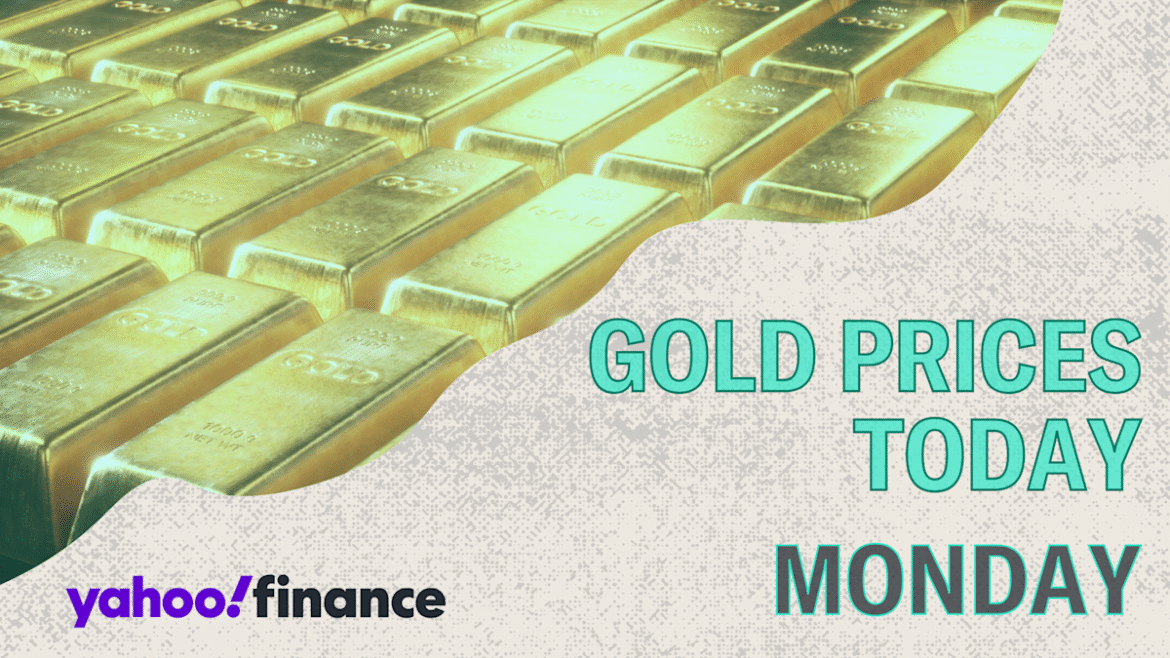Gold (GC=F) futures opened at $4,007.20 per ounce on Monday, flat from Friday’s close of $4,009.80. The price of gold quickly moved over $4,100, putting gold futures up 56% since the start of the year.
There’s a true mix of market influences swirling about, but higher or at least stable gold prices continue to persist. On one hand, the Fed remains without key economic reports that guide its decision-making. Yet, the CME FedWatch tool currently projects a 65% chance that rates will fall yet again next month.
While an ongoing government shutdown will likely only deteriorate the lowest levels of consumer sentiment seen in over three years, the Senate has moved forward with a bill to get the government up and running again.
Doubt cast by deteriorating economic reports, tariff uncertainty, and a weakening dollar continues to benefit the price of gold.
Trump tariffs live updates: Trump says tariffs will bring $2,000 ‘dividend’ for Americans, with SCOTUS fate in limbo
The opening price of gold futures on Monday is up 0.5% from Friday’s close of $3,982.20. Here’s a look at how the opening gold price has changed versus last week, month, and year:
One week ago: +0.8%
One month ago: +1.3%
One year ago: +49%
Two weeks ago, the price of gold futures was up 50.5% from one year ago.
24/7 gold price tracking: Don’t forget you can monitor the current price of gold on Yahoo Finance 24 hours a day, seven days a week.
Want to learn more about the current top-performing companies in the gold industry? Explore a list of the top-performing companies in the gold industry using the Yahoo Finance Screener. You can create your own screeners with over 150 different screening criteria.
Learn more: Gold vs. crypto: Which should investors own in debasement trade?
The price of gold can be quoted in multiple forms because the precious metal is traded in different ways. The two main gold prices investors should know about are spot prices and gold futures prices.
Learn more: How to invest in gold in 4 steps
The spot price of gold is the current market price per ounce for physical gold as a raw material, sometimes called spot gold. Gold ETFs that are backed by physical gold assets generally track the gold spot price.
The spot price is lower than what you’d pay to buy gold coins, bullion, or jewelry, since your total price will include a markup called the gold premium that covers refining, marketing, dealer overhead, and profits. The spot price is more like a wholesale price, and the spot price plus the gold premium is the retail price.
Learn more: Thinking of buying gold? Here’s what investors should watch for.
Gold futures are contracts that mandate a gold transaction at a specific price on a future date. These contracts are exchange-traded and more liquid than physical gold. They settle on the contract expiration date or earlier, either financially or via delivery. A financial cash settlement involves paying the contract’s profit or loss in cash. Delivery means the seller sends physical gold to the buyer for the contracted price.
Supply and demand determine gold spot prices and gold futures prices. Factors that influence gold supply and demand include:
Geopolitical events
Central bank buying trends
Inflation
Interest rates
Mining production
Learn more: Who decides what gold is worth? How prices are determined.
Whether you’re tracking the price of gold since last month or last year, the price-of-gold chart below shows the precious metal’s steady upward climb in value.



